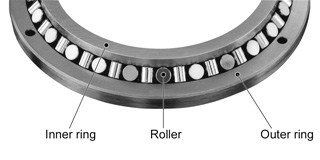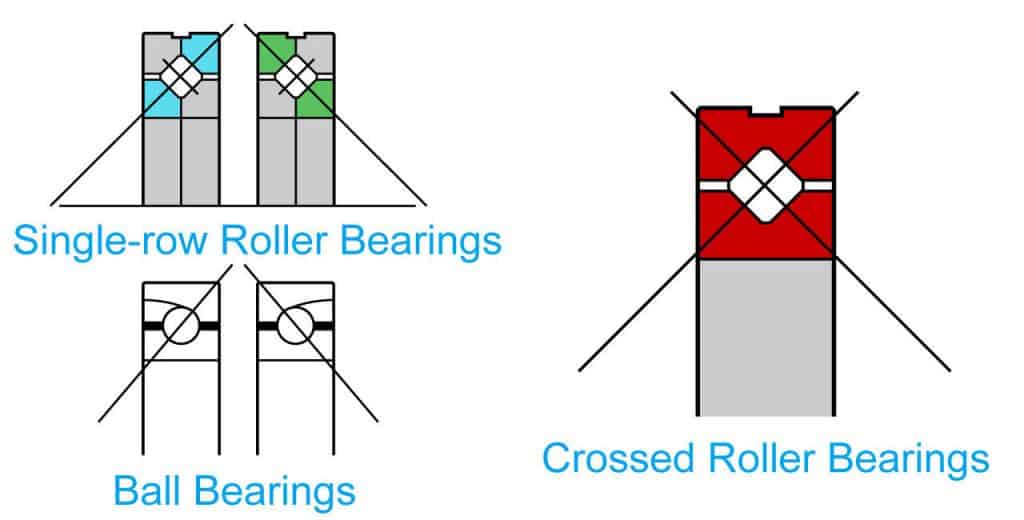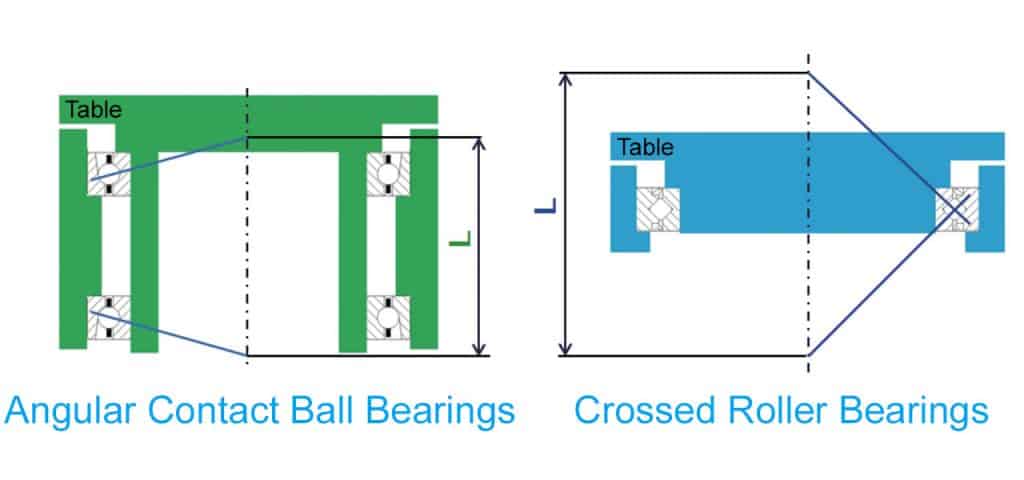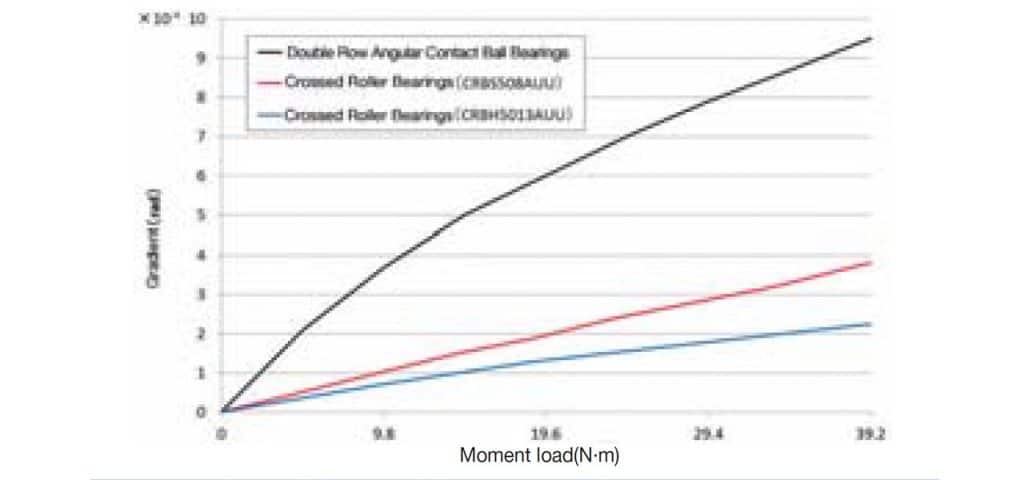What are Crossed Roller Bearings?
- Widely used in machine tools, industrial robots and medical equipment because of their high rotational accuracy.
- Roller guide options include a cage or separator as well as a full complement design. Both the cage and separator styles offer a small coefficient of friction for high-speed rotation. Full complement bearings handle heavy loads at low speeds.
- Sealed and open designs are available. Sealed bearings incorporate synthetic rubber seals to protect against dust, dirt and grease.
Product Overview

Crossed Roller Bearings are compact bearings with their rollers alternately crossed at right angles to each other between inner and outer rings. The orthogonal array of rollers allows the bearing to handle complex loads simultaneously from any direction, which makes assembly possible without needing to worry about load direction.
Compact
The orthogonal array of rollers reduces the cross-sectional area of rear-mounted 45° contact angle roller bearings or single row ball bearings by half. This compact design allows you to more effectively utilize space in your application.
High Rigidity
The figure is a cross-section of a rotating turntable. The application point distance from the time moment load is applied to the turntable is L, and the allowable moment load of the bearing is proportional to application point distance L. If increasing application point distance L increase the moment rigidity of the turntable, two Angular Contact Ball Bearings are required. Because of the need for the distance between the bearings, the equipment size increases as well. However, even a single Crossed Roller Bearing can increase application point distance L, keeping equipment compact and improving moment rigidity.
Because of the line contact structure, when using rollers for the bearing inner rolling elements, rigidity is greatly improved compared to ball type bearings. For example, rigidity is increased 3 to 4 times while achieving more compact cross-section dimensions compared to a double row Angular Contact Ball Bearing



